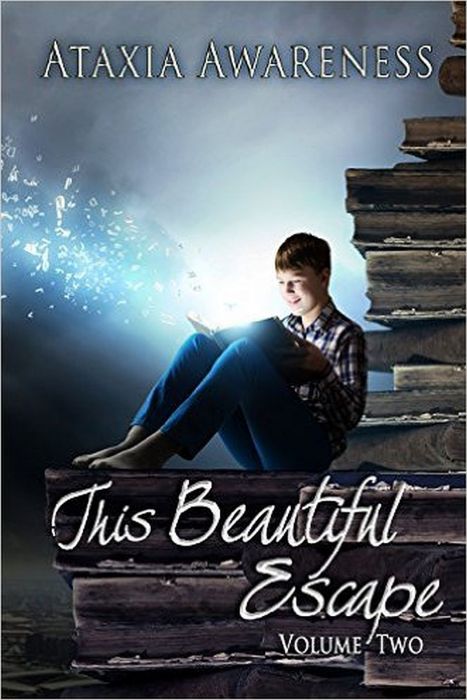PHP Deprecated: Creation of dynamic property SocialPoints::$string is deprecated in /home/authorsinfo/public_html/administrator/components/com_easysocial/includes/dependencies.php on line 123
PHP Deprecated: Creation of dynamic property SocialBadges::$string is deprecated in /home/authorsinfo/public_html/administrator/components/com_easysocial/includes/dependencies.php on line 123
PHP Deprecated: Creation of dynamic property Joomla\Registry\Registry::$default is deprecated in /home/authorsinfo/public_html/libraries/vendor/joomla/registry/src/Registry.php on line 937
PHP Deprecated: Creation of dynamic property plgContentLayerslideshow::$context is deprecated in /home/authorsinfo/public_html/plugins/content/layerslideshow/layerslideshow.php on line 38
SO YOU’D LIKE TO COMMIT MURDER AND GET AWAY WITH IT by Salvatore Buttaci
I’ve led you on and I am sorry. You came in good faith to discover precisely how to end another’s life and walk away untouched by the law. In other words, you hoped this article would explain, step by step, how to exact justice without fear of reprisal. Come on now! In this technological age of advanced forensic science and DNA testing? You’d be caught in a heartbeat.
Would you consider another option? One that does not lead to the death sentence or life in prison? How about writing a flash story about someone who gets away with murder? In 1,000 words or less you can lay it all out: the weapon, the motive, the murderer, the victim.
Okay, so you’ve changed your mind about ridding the world of some undesirable. You’ve decided to let the cold heart of your oppressive boss go on ticking. You’ll put up with that neighbor of yours who poisoned your collie last spring. You’ll learn to forgive.
Here is something else you might want to learn: how to write flash fiction. Pick a genre and go with it. Make readers laugh and cry. Explore alternate-history plots. Hop a sky ship and head out to the Earth colonies light-years away.
Here are 13 suggestions to help you write flash fiction. Every flash writer out there could impart at least 13 different bits of advice to help you write flash fiction. The following 13 I’ve learned from my own experience. Maybe they’ll make sense to you too.
1. Imagine a scene that takes place after some action transpired. Sort of like jumping on a galloping horse. Pretend you’re the director of a movie. Select a character or two within a particular time and place. What must the leading character do to solve the story’s problem? What is the problem?
2. Decide on which point of view would most effectively tell the story. Should it be First Person “I”? As spectator or participator? How about Second Person “You”? Or Third Person Limited, where the narrator tells the flash story from the eyes of one particular character, usually the one who must solve the story’s problem. Or perhaps Third Person Omniscient, where the narrator is a know-it-all who tells the story from all characters’ perspectives. For me, First Person and Third Person Limited work best.
3. Decide on the verb tense and maintain it throughout the flash. Tell the story as it progresses? Present Tense. After it occurred? Past Tense. Settle on whichever provides the stronger impact, and keep that tense consistent. Nothing turns off editors more than tense hopping.
4. Avoid writing a story that utilizes only narration, dialogue, description, exposition, or persuasion. Each serves a purpose and a good flash contains a mix of at least three of these kinds of writing. You’ve heard it before: Show the story, don’t tell it. Let your reader see the scenes as they head towards the climax and finally the resolution. Description provides sense impressions that allow for visualization. Exposition answers questions so the flash makes sense. Realistic dialogue goes a long way to keeping the flash real. Persuasion in concrete terms is the tug of war game where the protagonist problem solver pulls on the rope at the same time the antagonist does, thus creating a degree of tension or suspense. The reader needs to wonder throughout the flash if the protagonist will knock the antagonist on his can or be dragged through the mud of defeat.
5. Write several opening sentences and then select the one you feel is the strongest hook. Keep it short and tight. The start of the flash is the second thing read, after the strong title, so it has to entice readers so they are left with no choice but to take the hook and stay hooked for the duration, then at the end of the flash, unhook themselves and walk away satisfied.
Do not begin the flash with background information. Like the famous Jack Flash, just jump right in! Keep the backstory to an absolute minimum. Don’t tell more than you need to. In fact, let your character or characters reveal plot development by what they say and do and only what is necessary. A flash is a train ride from one station to the next. Passengers don’t appreciate the discomfort of stop-and-go or the jamming on of brakes. Nor do they care to look out the window and wonder, “Where the heck is this going?”
6. Keep the problem simple. Avoid sub-plots. You don’t have room for them. Save them for the short story, or better yet, your great American novel. Let the resolution be a simple yes or no, regardless of whether the problem is, “Will Fremont Todd save the world from the dreaded Gladiator worms?” or “Will Connie ask Tom to the Sadie Hawkins Day Dance?” Don’t leave any doubts in the minds of readers as to what happened in the end. If you do, you’ll never hook them into another story of yours again.
7. Read your completed flash aloud. Does it flow smoothly? Are all loose ends tied up? Does it clearly make sense?
8. Revise! Revise! Revise! Delete all unnecessary words. Get rid of useless adverbs and adjectives that weigh the flash down. Use strong and precise verbs. Avoid clichés. Add good word choices to your writing. Be creative but not vague. Rid the flash of any redundancies. A flash by definition is short-short! There is no room allowed for extra baggage.
9. Keep reference books handy. Remember that breaking grammatical rules requires that authors are quite familiar with the rules they bend or break. At your elbow keep a writer’s handbook, dictionary, and thesaurus, though the last must be referred to sparingly. Use more than just one Internet source to support facts.
10. Read your last-draft flash to someone else whose criticism you value. If it’s constructive, consider taking it, but don’t ask that uncle of yours who hates flashes because he thinks short stories are short enough and short-short ones are written by lazy writers who have little to write about.
11. Submit your flash for publication. An Internet search will reveal hundreds of e-zines anxious to read and publish well-written flashes. If your submitted flash is rejected, welcome to writers’ world! Instead of crying the blues and swearing off flash writing, submit the flash piece elsewhere. Sometimes we writers are lucky when an editor returns our work with a sentence or two explaining why or how to make it publishable. The important thing is, don’t give up. Persevere!
12. Read flash stories by other writers. One that comes so quickly to mind are my own short-short-story collections, Flashing My Shorts and the follow-up, 200 Shorts, both published by All Things That Matter Press.
13. Become a member on free Internet flash sites like Pen 10, Thinking Ten, and Six Sentences for inspiration. They will provide the impetus needed for you to write a flash every single day.
#
This article first appeared at Amazon.com.
Salvatore Buttaci, author of Flashing My Shorts and 200 Shorts http://www.kindlegraph.com/authors/sambpoet
Both available in book and Kindle editions
When you subscribe to the blog, we will send you an e-mail when there are new updates on the site so you wouldn't miss them.
PHP Deprecated: Creation of dynamic property EasyBlogPost::$isImage is deprecated in /home/authorsinfo/public_html/administrator/components/com_easyblog/includes/themes/helpers/post/entry.php on line 415
PHP Deprecated: Creation of dynamic property EasyBlogPost::$isImage is deprecated in /home/authorsinfo/public_html/administrator/components/com_easyblog/includes/themes/helpers/post/entry.php on line 415
PHP Deprecated: Creation of dynamic property EasyBlogPost::$isImage is deprecated in /home/authorsinfo/public_html/administrator/components/com_easyblog/includes/themes/helpers/post/entry.php on line 415
PHP Deprecated: Creation of dynamic property EasyBlogPost::$isImage is deprecated in /home/authorsinfo/public_html/administrator/components/com_easyblog/includes/themes/helpers/post/entry.php on line 415
PHP Deprecated: Creation of dynamic property EasyBlogPost::$isImage is deprecated in /home/authorsinfo/public_html/administrator/components/com_easyblog/includes/themes/helpers/post/entry.php on line 415
PHP Deprecated: Creation of dynamic property EasyBlogPost::$isImage is deprecated in /home/authorsinfo/public_html/administrator/components/com_easyblog/includes/themes/helpers/post/entry.php on line 415

















Comments